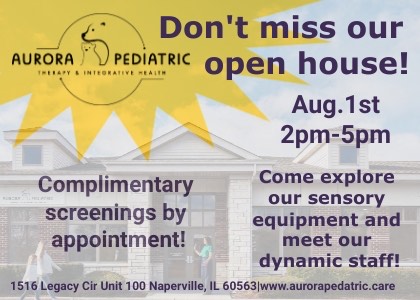Longtime Naperville resident Mary Lou Wehrli recently returned to the place she once called home, the Greene Valley Farm House.
“My heart brings me here,” said Wehrli.
History of the Greene Valley Farm House
Better known as the Oak Cottage, it’s located at 23W171 Hobson Road in unincorporated Naperville. The two-story Greek Revival-style farmhouse was built in 1850 by early settler William Briggs Greene.
“This space on the landscape has been significant to the changing times in the United States of America, from the bison to the Native Americans to the early men and women who came here looking for a bigger life, a better life,” said Wehrli.
The Forest Preserve District of DuPage County bought the land the cottage sits on in 1970 with the provision that the current residents could stay until their passing. In the early 1980’s the district took full ownership, with Wehrli and her husband temporarily moving in to look after the property. All these years later, she says she doesn’t want to see it torn down.
“This is important to preserve because of its context,” said Wehrli. “This farmstead really epitomizes a family who has contributed hugely to the local economy with the dairy farm and the agricultural pursuits. They contributed to industry with the Barbara Greene Factory that Bill Greene founded and established in Aurora.”
In need of rehabilitation
The building’s been vacant since 1983 (when Wehrli last lived there) and since then, it’s fallen into disrepair, even with the forest preserve’s efforts to maintain it. Now the organization is looking for a partner to help with renovations and to find a new use for Oak Cottage.
“We’re just really hoping that the word will get out and that people will step forward and show that interest so that it can help breathe new life into this facility,” said Jessica Ortega, Manager of Strategic Plans and Initiatives for the Forest Preserve District of DuPage County.
While the roof was replaced in 2007 and the exterior repainted in 2012, according to members of the forest preserve, the cottage needs significant rehabilitation that could cost hundreds of thousands of dollars. According to a press release from the forest preserve, estimated costs for adaptive reuse range from $279,000 to $500,000 with another $200,000 – $500,000 for sitework and utilities depending on local requirements.
“There may be some structural improvements that need to take place to level some floors to make sure the integrity and the weight-bearing is sufficient,” said Jason Berger, Facilities Manager, Forest Preserve District of DuPage. “It may be that all the wall board, with having to re-do probably all the electric, plumbing, HVAC in the system – wall, ceilings, floors – you likely would be having to take a lot of this out.”
During a recent open house at the cottage, a small group took a close look inside, including Kendra Parzen of Landmarks Illinois. In 2023, the organization put the cottage on its list of most endangered historic places in Illinois.
“We were very concerned about potential plans to demolish the home, which we think is an important component of understanding the story of the Greene Valley Forest Preserve,” said Kendra Parzen, advocacy manager, Landmarks Illinois. “I wanted to come here today in case my organization can offer assistance to anyone who is interested in repurposing the building.”
Seeking help to keep Oak Cottage
As part of its master plan, the Forest Preserve District of DuPage County is accepting statements of interest from individuals and organizations now through October 16, seeking ideas on how to repurpose the cottage in a way that aligns with the forest preserve’s mission of conservation, education, and preservation.
The organization will then move forward in two phases. The first involves evaluating these statements of interest based on such factors as proposed reuse, preservation strategy, project funding, and mission alignment. From there, selected applicants will enter phase two which requires submission of a business plan, architectural and engineering plans, and evidence of financial and organizational support, with the final project expected to be completed within three years.
If you have a story idea, we want to hear from you!










